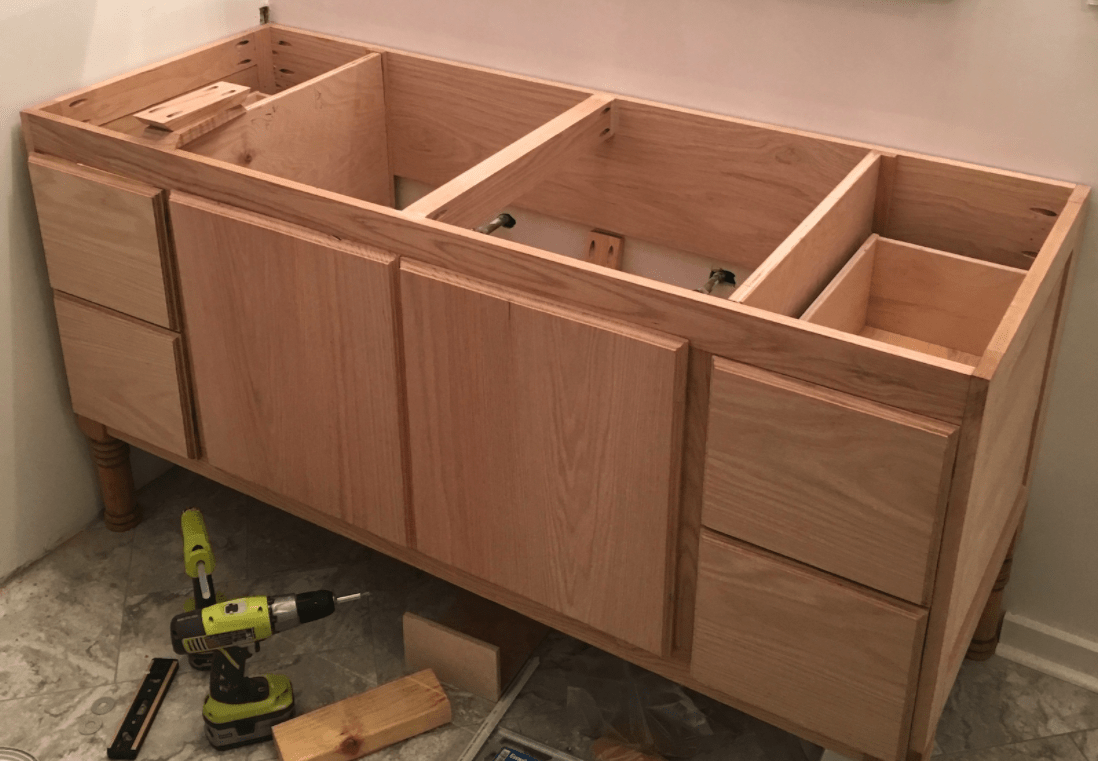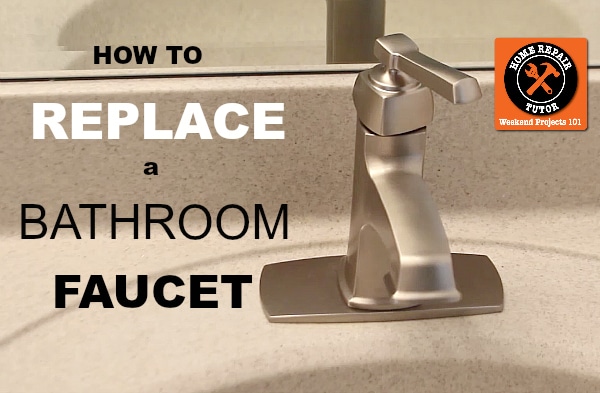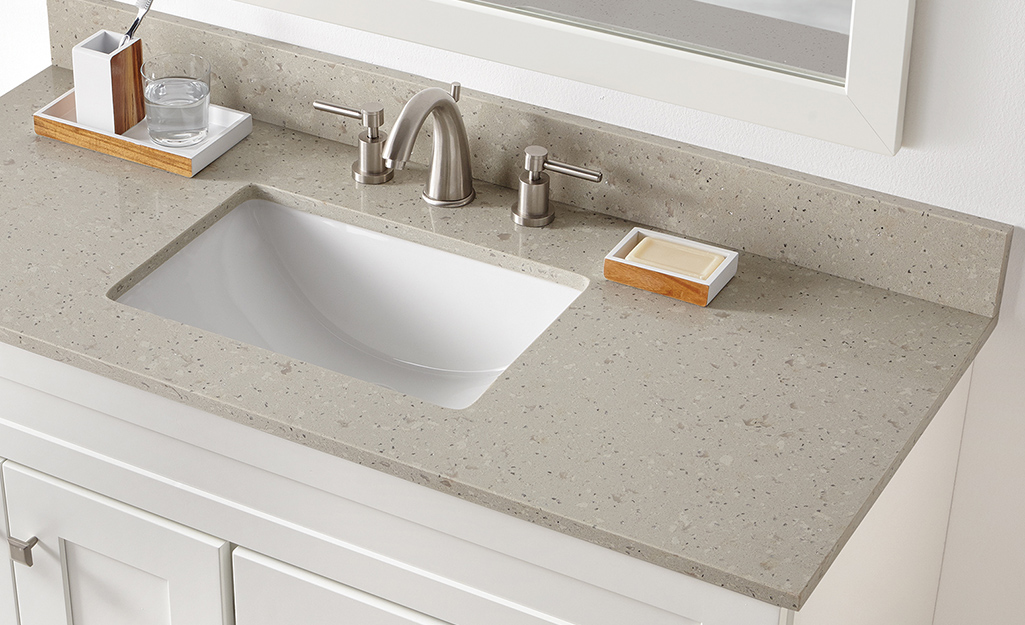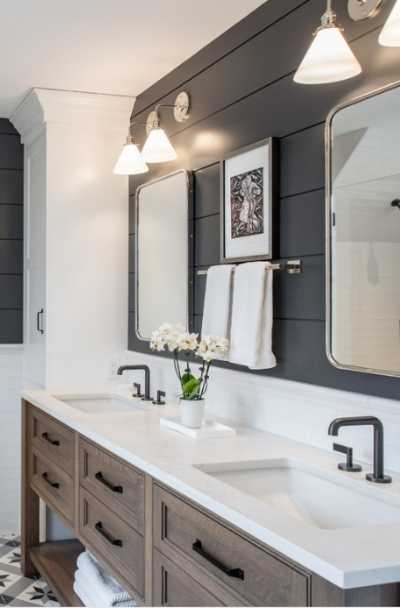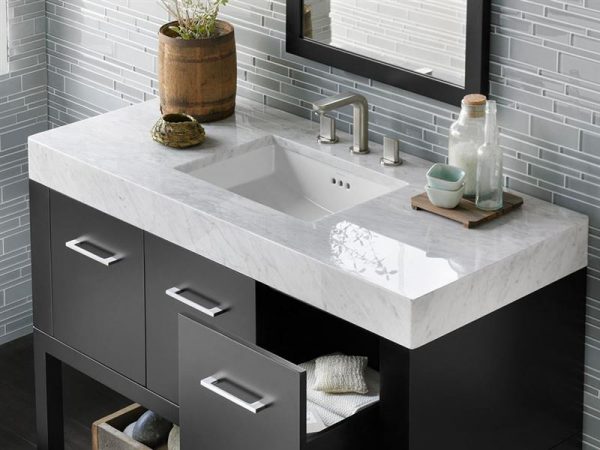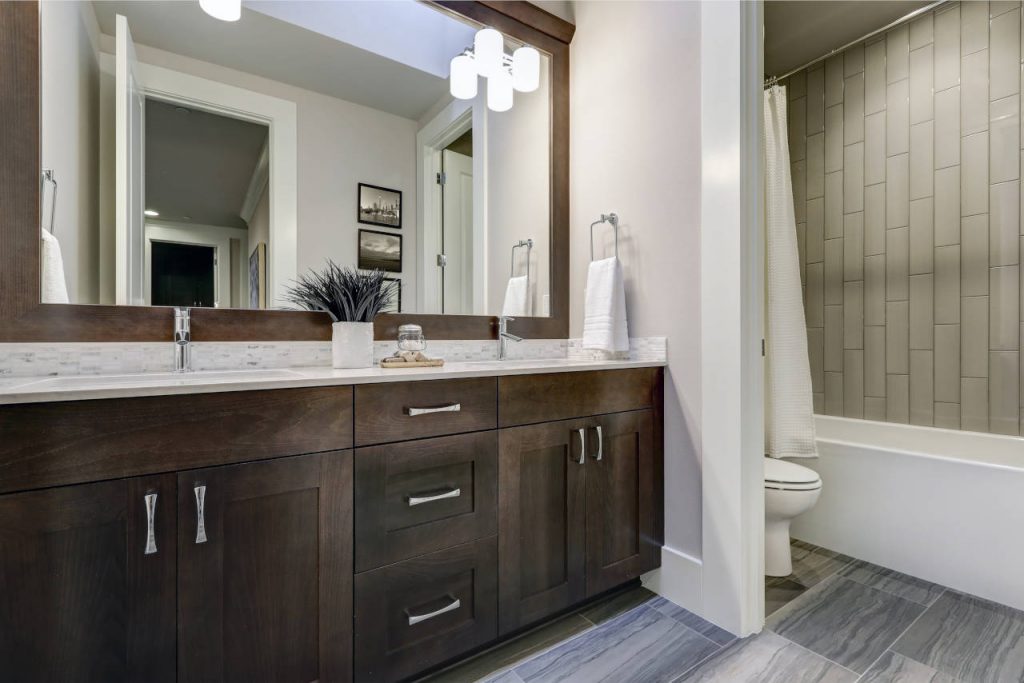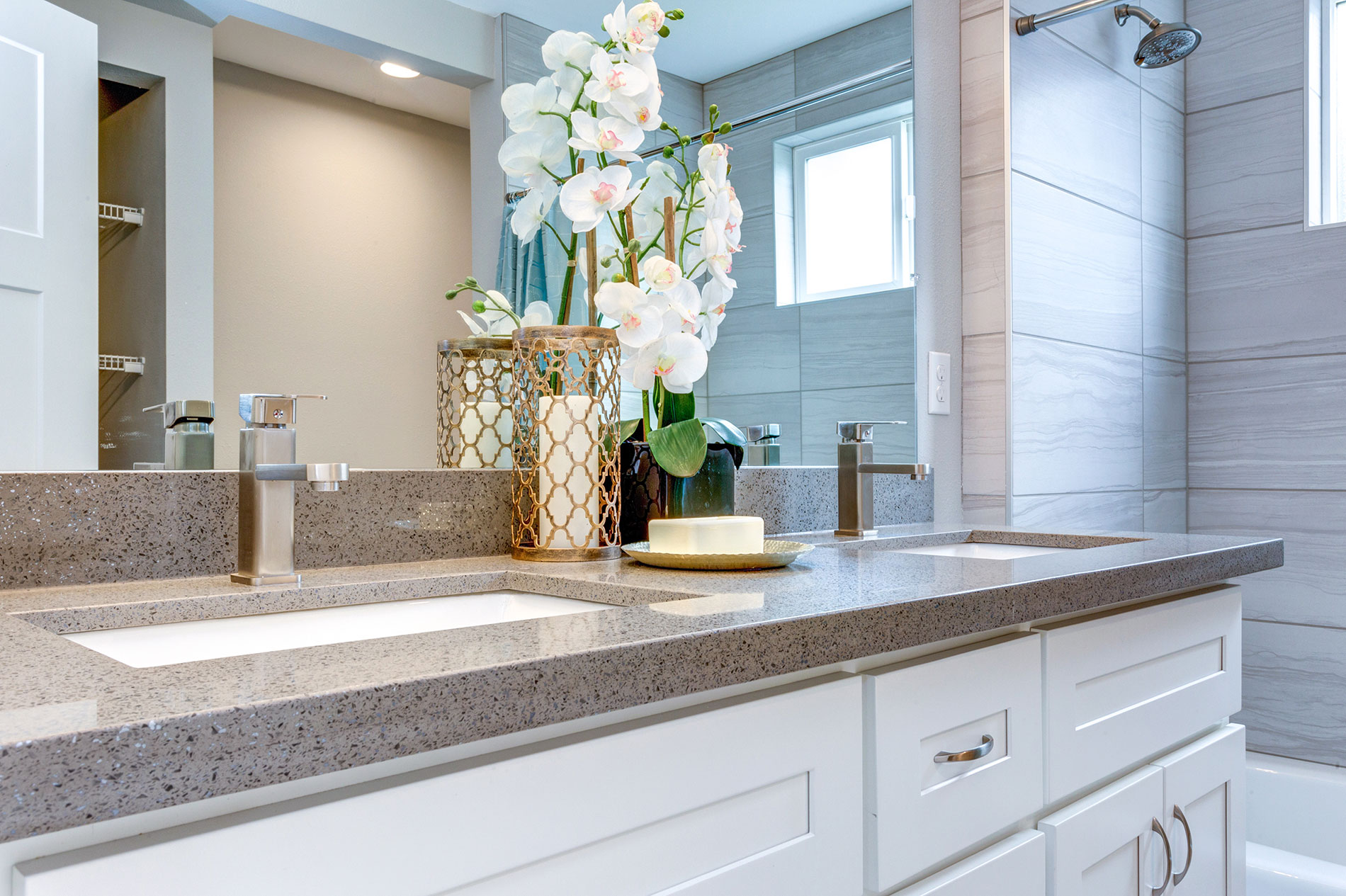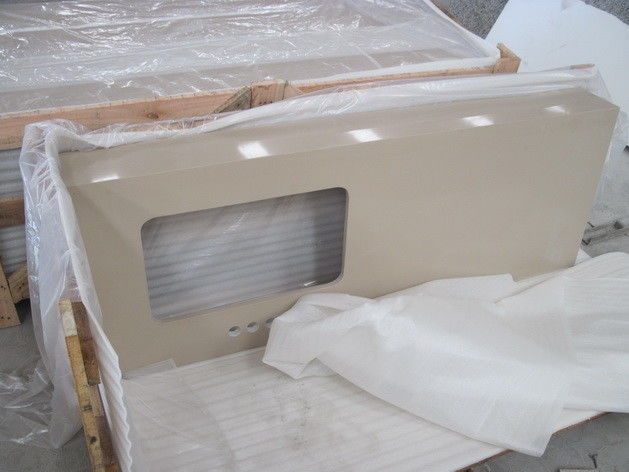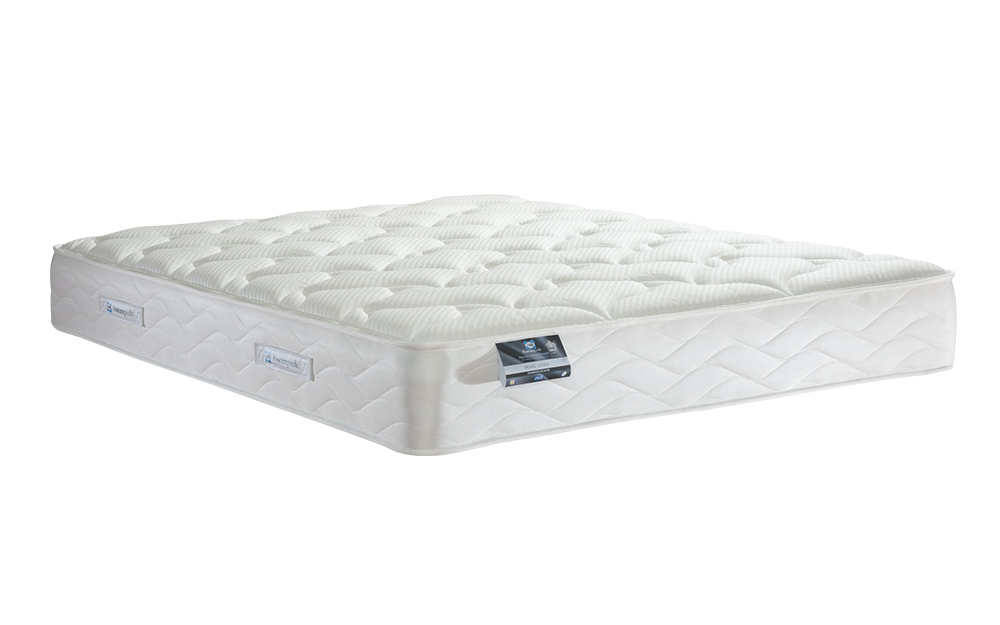Removing a bathroom vanity countertop may seem like a daunting task, but with the right tools and knowledge, it can be done easily and safely. Whether you are looking to update your bathroom or simply need to replace a damaged countertop, the process is relatively simple. In this article, we will provide a step-by-step guide on how to remove a bathroom vanity countertop and offer some tips for a smooth and damage-free removal process.Removing A Bathroom Vanity Countertop
The first step in removing a bathroom vanity countertop is to prepare the area. Start by removing any items from the countertop and clearing out the cabinet below. This will make it easier to work and prevent anything from getting damaged during the removal process. Next, turn off the water supply to the sink and disconnect the plumbing. This may require a wrench to loosen the connections. If your vanity has a built-in sink, you may need to detach the sink from the countertop before proceeding. Once the plumbing is disconnected, you can begin removing the countertop itself. Most vanity countertops are secured to the cabinet with screws, so start by unscrewing them from the bottom. If your countertop has a backsplash, you may need to remove it separately. Once the screws are removed, carefully lift the countertop to detach it from the cabinet. If it feels stuck, you may need to use a putty knife to loosen any adhesive or caulk that was used to secure it. Be sure to have someone help you lift the countertop, as it can be heavy and fragile.How to Remove a Bathroom Vanity Countertop
Now that you know the basic steps for removing a bathroom vanity countertop, let's break it down into a step-by-step guide for a smoother process: Step 1: Clear out the bathroom vanity and cabinet below. Step 2: Turn off the water supply and disconnect the plumbing. Step 3: Remove any screws or brackets securing the countertop to the cabinet. Step 4: If your countertop has a backsplash, remove it separately. Step 5: Use a putty knife to loosen any adhesive or caulk between the countertop and the cabinet. Step 6: Have someone help you carefully lift and remove the countertop from the cabinet.Step-by-Step Guide for Removing a Bathroom Vanity Countertop
Removing a bathroom vanity countertop can be a DIY project for those who feel comfortable with basic tools and techniques. However, if you are not confident in your abilities or do not have the necessary tools, it may be best to hire a professional to ensure a safe and successful removal process. If you do decide to tackle this project on your own, be sure to have all the necessary tools on hand. These may include a putty knife, wrench, screwdriver, and possibly a saw if you need to cut through any caulk or adhesive. It is also important to have someone assist you in lifting and removing the countertop, as it can be heavy and awkward to maneuver by yourself.DIY Bathroom Vanity Countertop Removal
To successfully remove a bathroom vanity countertop, you will need the following tools: 1. Putty Knife: This will help loosen any adhesive or caulk between the countertop and the cabinet. 2. Wrench: You will need a wrench to disconnect the plumbing from the sink. 3. Screwdriver: Most vanity countertops are secured with screws, so you will need a screwdriver to remove them. 4. Saw: If your countertop is secured with heavy-duty adhesive or caulk, a saw may be necessary to cut through it.Tools Needed for Removing a Bathroom Vanity Countertop
Here are some tips to keep in mind to ensure a safe and damage-free bathroom vanity countertop removal process: 1. Have someone help you: As mentioned before, it is important to have someone assist you in lifting and removing the countertop. 2. Protect the walls: To avoid damaging the walls, place a towel or cardboard against the wall before removing the countertop. 3. Be gentle: Vanity countertops are fragile, so be sure to handle them with care to avoid any cracks or breaks. 4. Disconnect the plumbing carefully: Take your time to ensure that the plumbing is disconnected properly to avoid any leaks or damage to the pipes. 5. Use a putty knife: A putty knife can help loosen any adhesive or caulk without causing damage to the countertop or cabinet.Tips for Removing a Bathroom Vanity Countertop Safely
One of the biggest concerns when removing a bathroom vanity countertop is damaging the wall. To avoid this, make sure to take your time and be gentle when detaching the countertop from the wall. Place a towel or cardboard between the countertop and the wall to act as a buffer and protect the wall from any scratches or dings.Removing a Bathroom Vanity Countertop Without Damaging the Wall
If your vanity has a built-in sink, you may need to detach the sink from the countertop before removing it from the cabinet. This can be done by unscrewing any brackets or clips holding the sink in place. Be sure to support the sink as you remove it to avoid any damage or injuries.Removing a Bathroom Vanity Countertop with a Built-in Sink
If your bathroom vanity has a tile backsplash, you may need to remove it separately from the countertop. This can be done with a putty knife and some gentle prying to loosen the tiles. Take your time to avoid damaging the tiles or the wall behind them.How to Remove a Bathroom Vanity Countertop with Tile Backsplash
If you are not comfortable removing your bathroom vanity countertop on your own or do not have the necessary tools, it may be best to hire a professional. They have the experience, tools, and knowledge to safely and efficiently remove your countertop without causing any damage to your bathroom. Plus, it can save you time and hassle in the long run. In conclusion, removing a bathroom vanity countertop may seem like a daunting task, but with the right tools and techniques, it can be done easily and safely. Just remember to take your time, be gentle, and have someone help you. And if you are not confident in your abilities, it is always best to hire a professional for a seamless and stress-free removal process.Professional Bathroom Vanity Countertop Removal Services
Why Removing a Bathroom Vanity Countertop Can Transform Your Space

Enhancing Your Bathroom Design
 If you're looking to give your bathroom a quick and easy makeover, removing your vanity countertop can make a big impact. Not only does it instantly update the look of your bathroom, but it also allows for more customization and personalization in your space. With a wide variety of materials and styles to choose from, you can create a unique and stylish look that reflects your personal taste and complements the rest of your bathroom design.
If you're looking to give your bathroom a quick and easy makeover, removing your vanity countertop can make a big impact. Not only does it instantly update the look of your bathroom, but it also allows for more customization and personalization in your space. With a wide variety of materials and styles to choose from, you can create a unique and stylish look that reflects your personal taste and complements the rest of your bathroom design.
Improving Functionality and Accessibility
 Another reason to consider removing your bathroom vanity countertop is to improve the functionality and accessibility of your space. Many older homes have bulky and outdated vanity countertops that can take up a lot of valuable space and make it difficult to access the plumbing and storage areas underneath. By removing the countertop, you can create a more open and spacious feel in your bathroom and make it easier to reach and use the plumbing and storage areas.
Pro tip:
If you have a smaller bathroom, consider replacing your vanity countertop with a pedestal sink or wall-mounted sink to maximize space and improve accessibility.
Another reason to consider removing your bathroom vanity countertop is to improve the functionality and accessibility of your space. Many older homes have bulky and outdated vanity countertops that can take up a lot of valuable space and make it difficult to access the plumbing and storage areas underneath. By removing the countertop, you can create a more open and spacious feel in your bathroom and make it easier to reach and use the plumbing and storage areas.
Pro tip:
If you have a smaller bathroom, consider replacing your vanity countertop with a pedestal sink or wall-mounted sink to maximize space and improve accessibility.
Increase Property Value
 In addition to the aesthetic and functional benefits, removing a bathroom vanity countertop can also increase the value of your property. By upgrading to a more modern and stylish countertop, you can make your bathroom more attractive to potential buyers and increase the overall value of your home. This is especially beneficial if you're planning on selling your house in the near future.
Pro tip:
Consider using high-quality and durable materials, such as granite or quartz, for your new vanity countertop as they can add significant value to your home.
In addition to the aesthetic and functional benefits, removing a bathroom vanity countertop can also increase the value of your property. By upgrading to a more modern and stylish countertop, you can make your bathroom more attractive to potential buyers and increase the overall value of your home. This is especially beneficial if you're planning on selling your house in the near future.
Pro tip:
Consider using high-quality and durable materials, such as granite or quartz, for your new vanity countertop as they can add significant value to your home.
The Removal Process
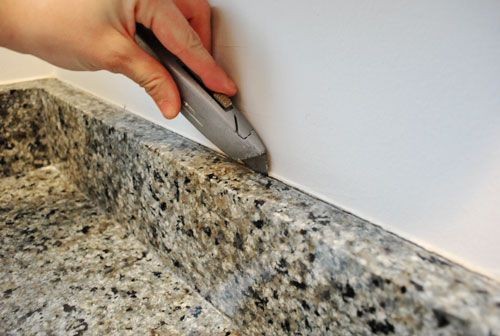 Removing a bathroom vanity countertop may seem like a daunting task, but with the right tools and techniques, it can be a simple and straightforward process. First, make sure to turn off the water supply and disconnect any plumbing connections. Then, use a utility knife to cut through the caulk sealing the countertop to the vanity base. Finally, carefully lift and remove the countertop from the base. If you're not comfortable doing this yourself, it's always best to hire a professional to ensure a smooth and safe removal process.
Pro tip:
Before removing your old countertop, make sure to measure the dimensions of your vanity base to ensure a proper fit for your new countertop.
In conclusion, removing a bathroom vanity countertop can greatly improve the look, functionality, and value of your bathroom. With a little bit of planning and some DIY skills, you can transform your space into a more modern and personalized oasis. So if you're looking to give your bathroom a quick and easy makeover, consider removing your old vanity countertop and give your bathroom the upgrade it deserves.
Removing a bathroom vanity countertop may seem like a daunting task, but with the right tools and techniques, it can be a simple and straightforward process. First, make sure to turn off the water supply and disconnect any plumbing connections. Then, use a utility knife to cut through the caulk sealing the countertop to the vanity base. Finally, carefully lift and remove the countertop from the base. If you're not comfortable doing this yourself, it's always best to hire a professional to ensure a smooth and safe removal process.
Pro tip:
Before removing your old countertop, make sure to measure the dimensions of your vanity base to ensure a proper fit for your new countertop.
In conclusion, removing a bathroom vanity countertop can greatly improve the look, functionality, and value of your bathroom. With a little bit of planning and some DIY skills, you can transform your space into a more modern and personalized oasis. So if you're looking to give your bathroom a quick and easy makeover, consider removing your old vanity countertop and give your bathroom the upgrade it deserves.
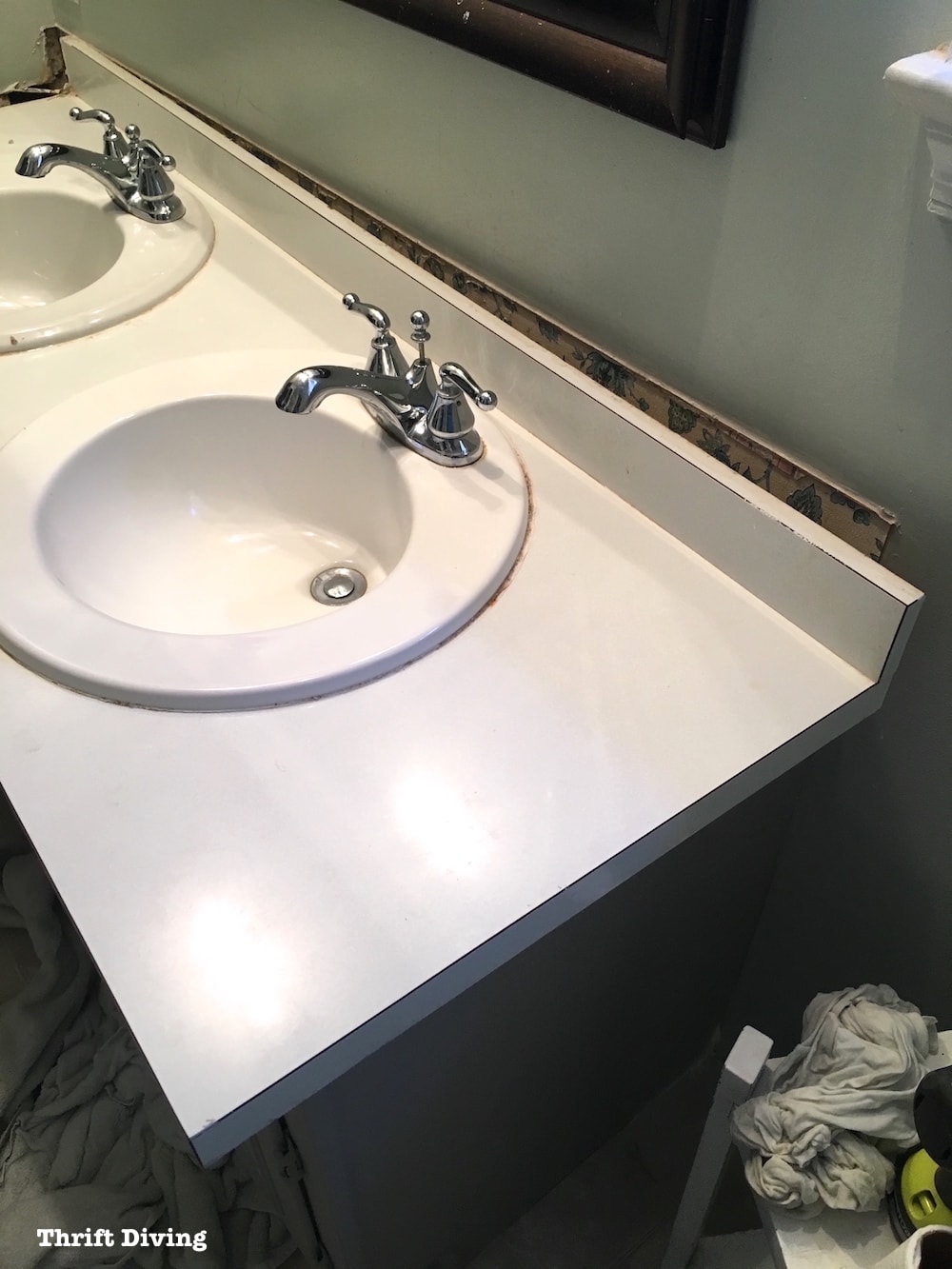

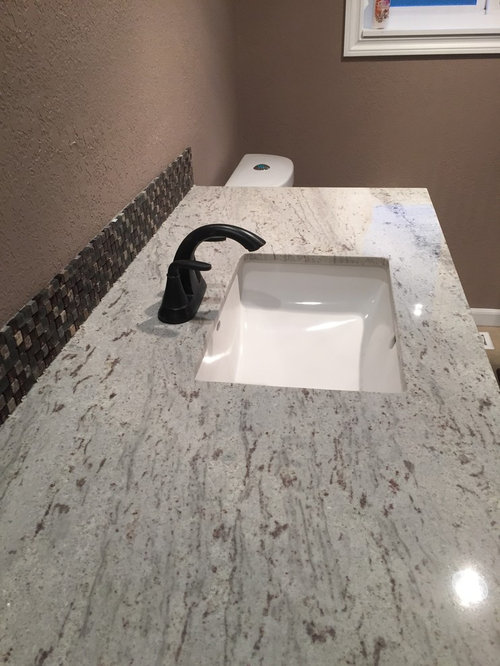

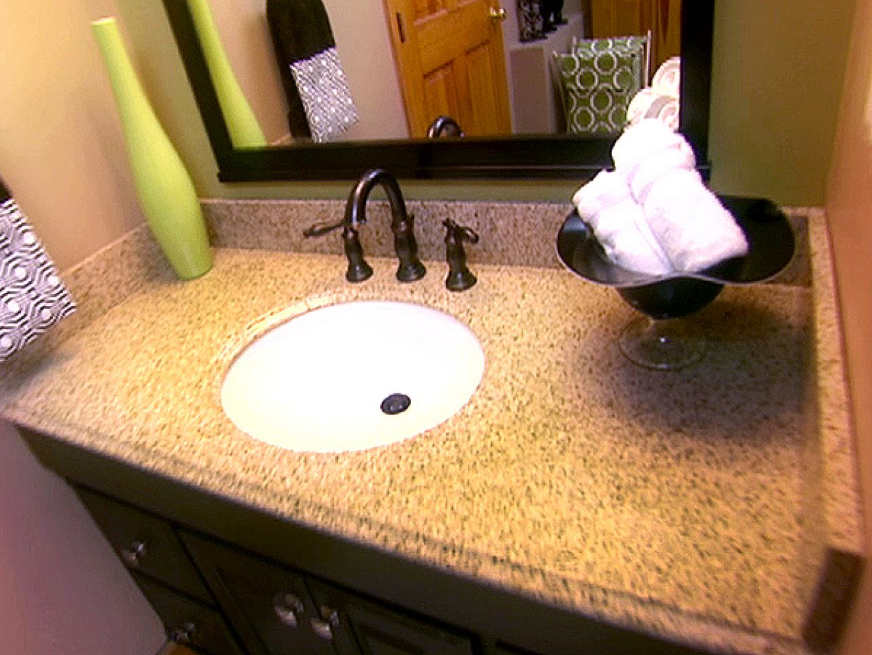



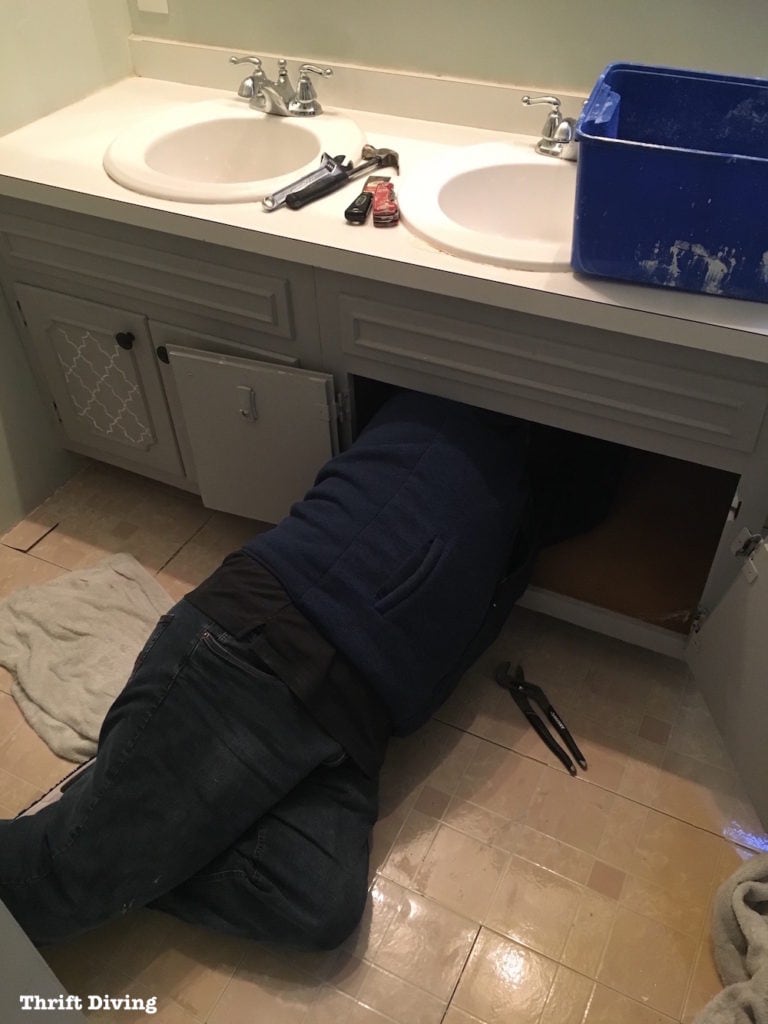

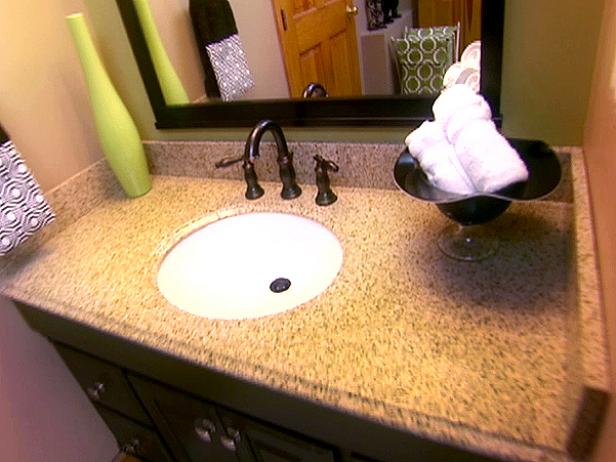

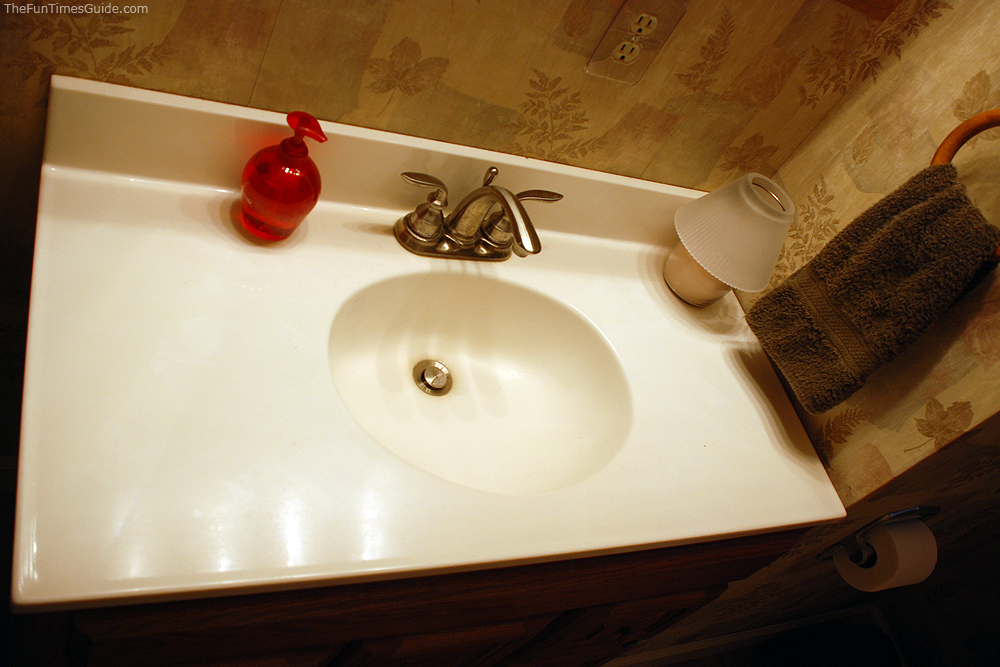






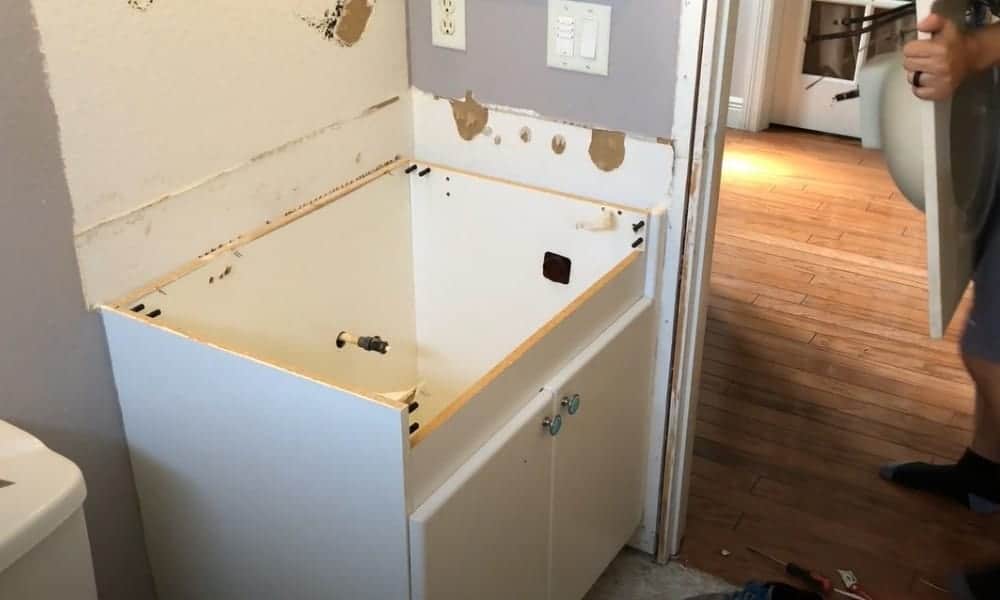








:max_bytes(150000):strip_icc()/build-something-diy-vanity-594402125f9b58d58ae21158.jpg)

